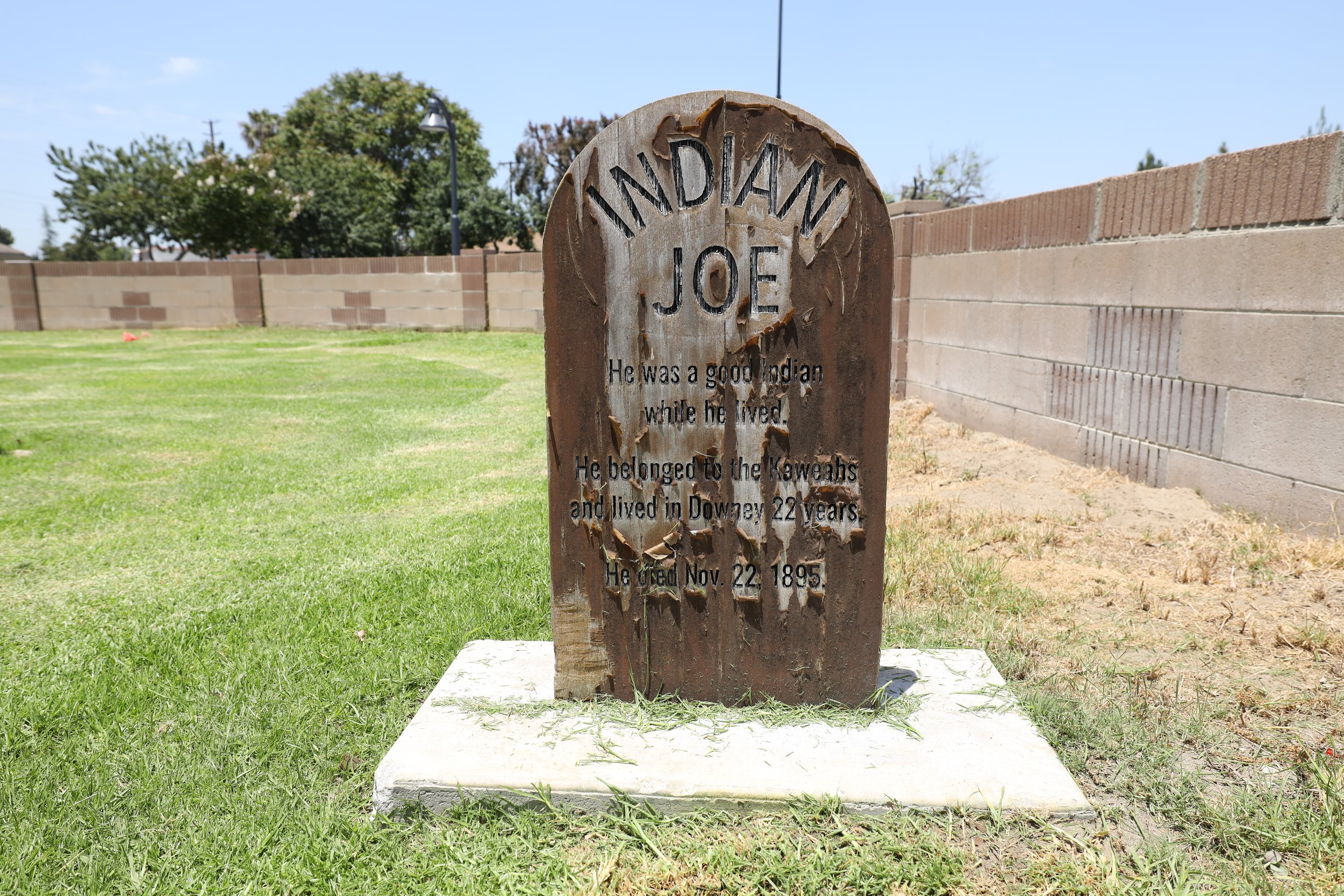Remembering Downey's early Native Americans inhabitants
The grave of Indian Joe at Downey Cemetery. (Photo by Alex Dominguez)
DOWNEY — The history of almost any community in North America should begin with the Indians that lived in the area before the white men came. The Indians that lived in Southern California belonged to the Cahullia tribe and seemed to be a little above average in culture and civilization and were somewhat warlike.
Like most of the American Indians, they lived mostly on game and fish. One of their members recounted that their tribe originated near the North Sea and at one time, because of scarcity of food, they started south where they reached the San Gabriel Valley and they decided this was the Garden of Eden - so they made it their home.
At that time there was more rainfall, more trees, plenty of game and a large lake north of Downey that provided an abundance of fish.
During the period of Indians wars, a messenger came from the Indians in Arizona asking for help in driving out the invaders of their land. Many of the able-bodied men went on this expedition and were gone for a period of two years. During these two years there were heavy rains in this vicinity and the large lake north of Downey broke through its banks and formed a new river flowing to the ocean.
Consequently when the warriors returned they found many things changed. There was very little fish and game because the lake was gone and there was not so much vegetation. Accordingly the Indians decided that the gods were angry because they had undertaken the war expedition and left this part of the country.
One Indian of this tribe stayed around Downey for many years. He was called Indian Joe and lived in a tule hut in the jungle northwest of the Gallatin School, and later in Downey by the railroad tracks.
He helped himself to fruit, nuts, eggs and such things as he needed, wherever he found them, feeling that this was right, and he kept two hunting dogs for retrieving. When he knew a neighbor was butchering, he often went to the home and was given meat.
He was peaceful, molesting no one, and often giving emergency aid in time of sickness by his knowledge of herbs and medicines. During the 80’s, he often passed my home, but he always carried a small bundle, presumably of food, tied in a red bandanna handkerchief; another he wore around his head in such a manner as to cover one eye. How he lost this eye was a secret he never divulged.
He died in 1896, supposedly well over 100 years old. He was buried in the northwest corner of the Downey Cemetery where his grave can still be seen.

